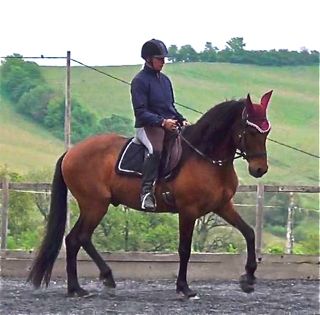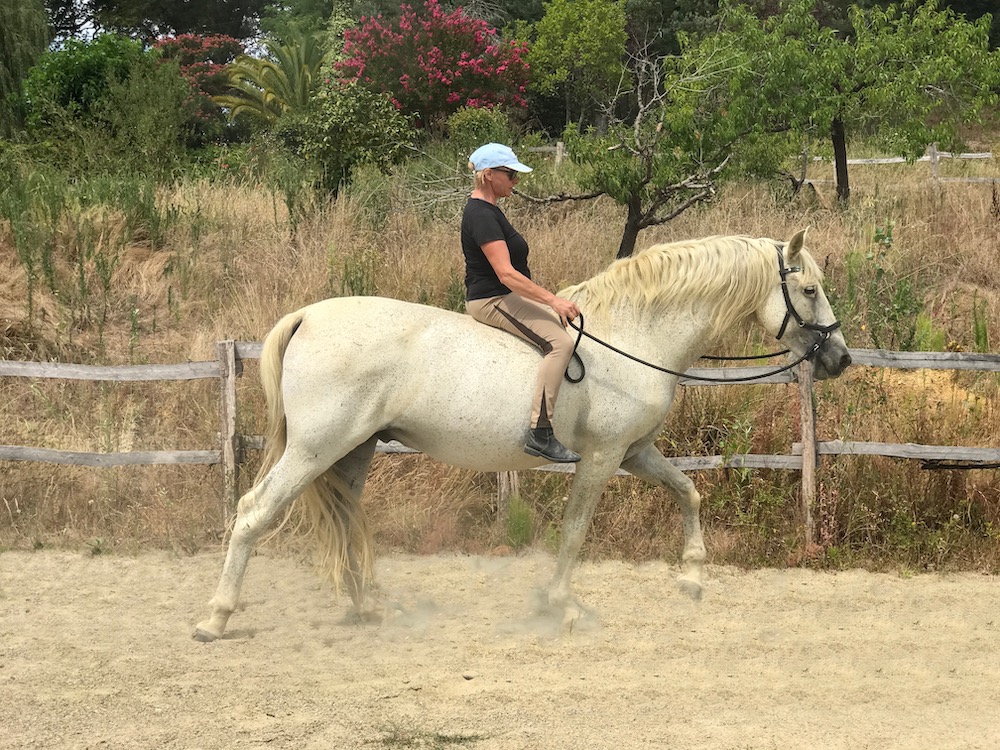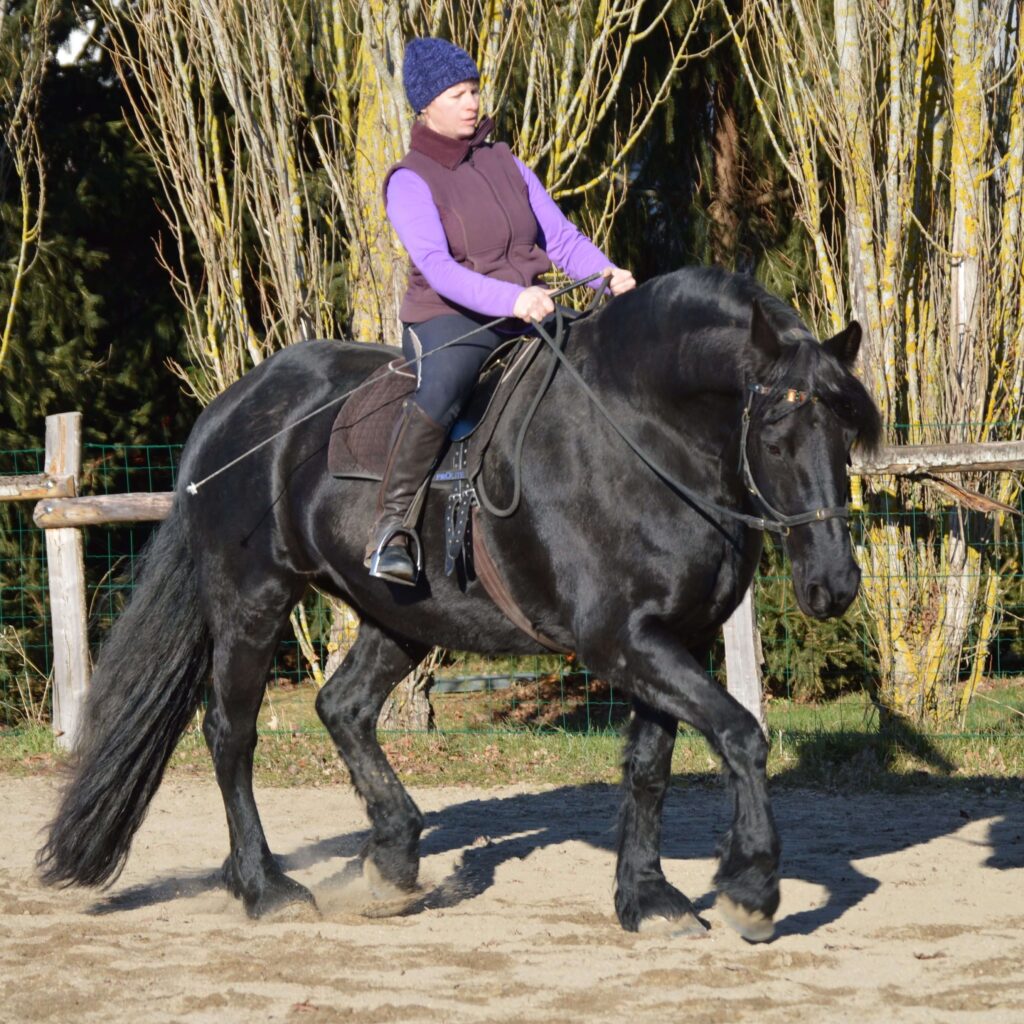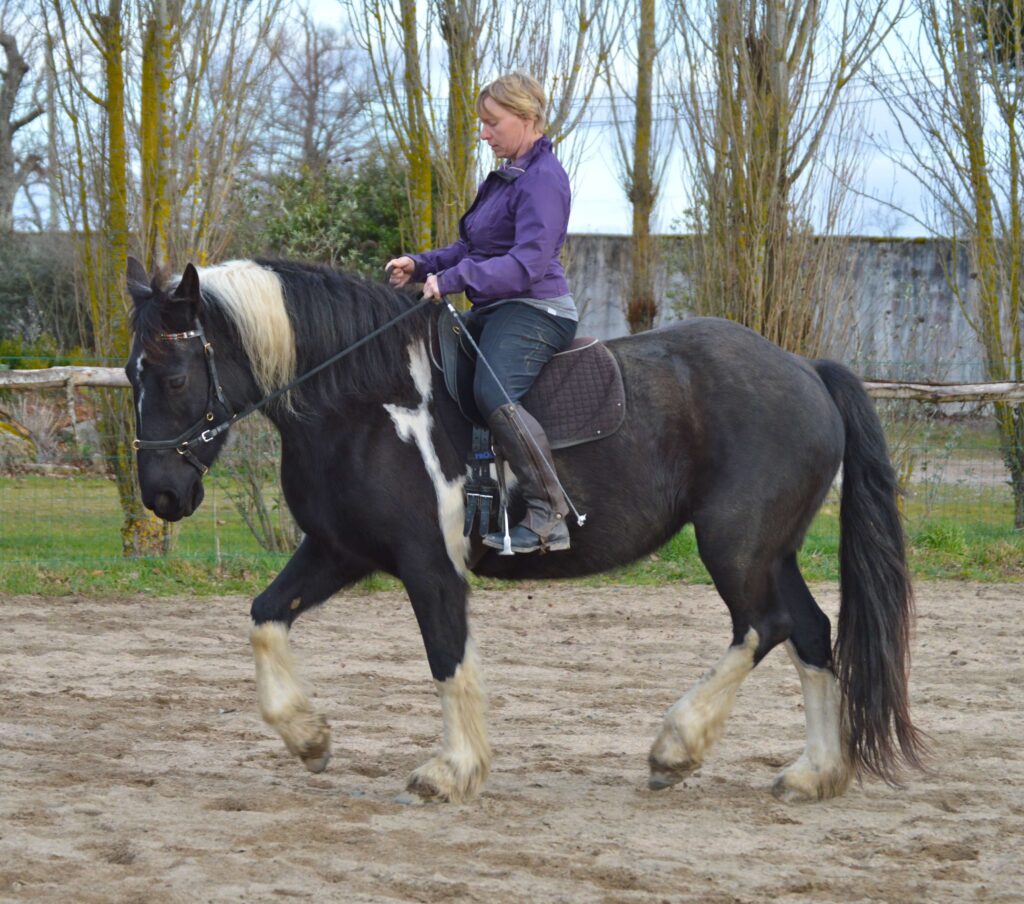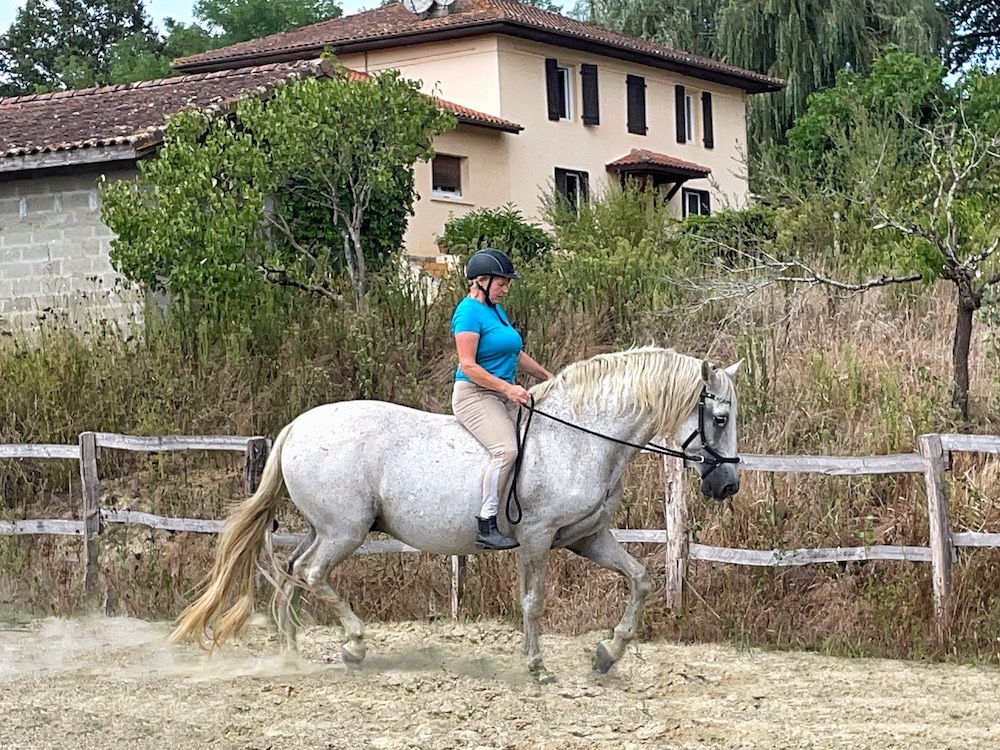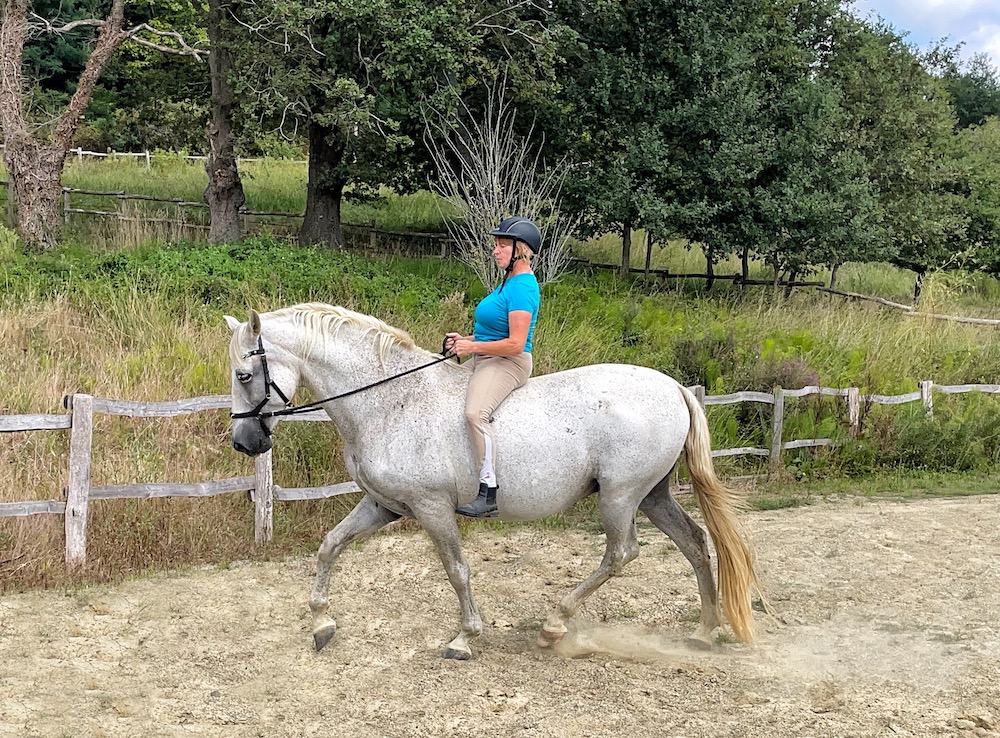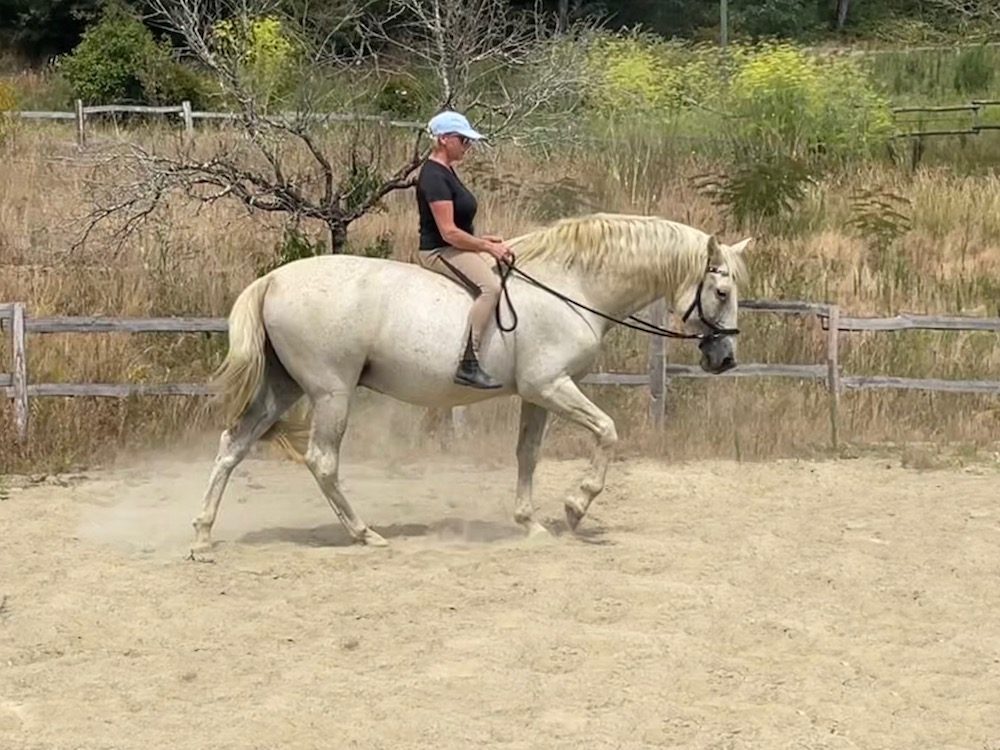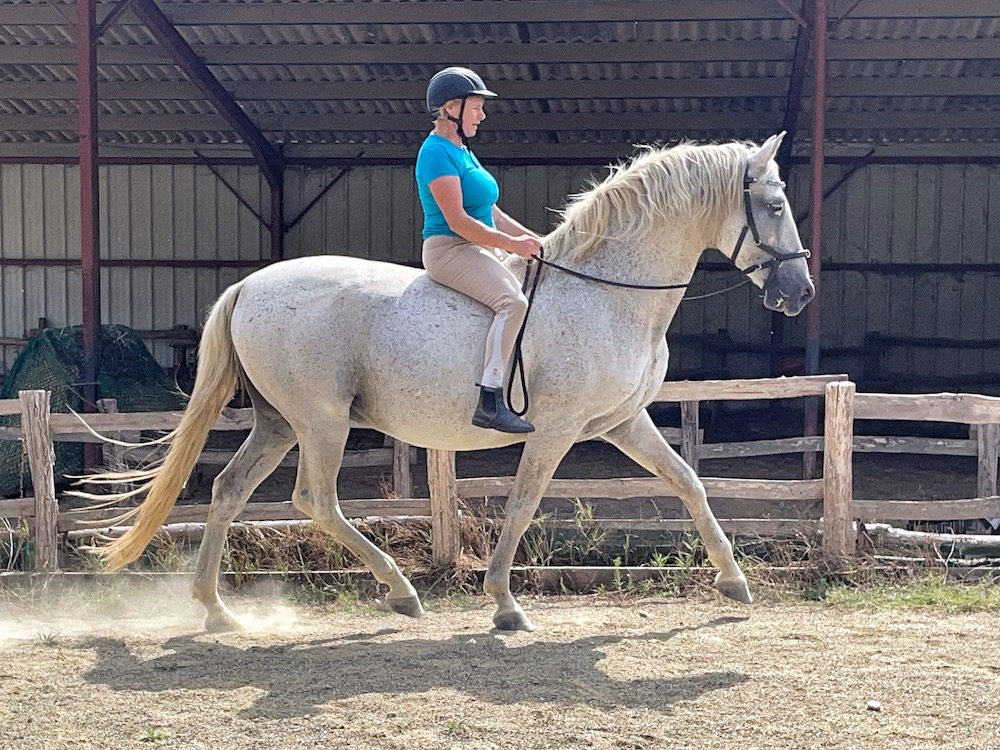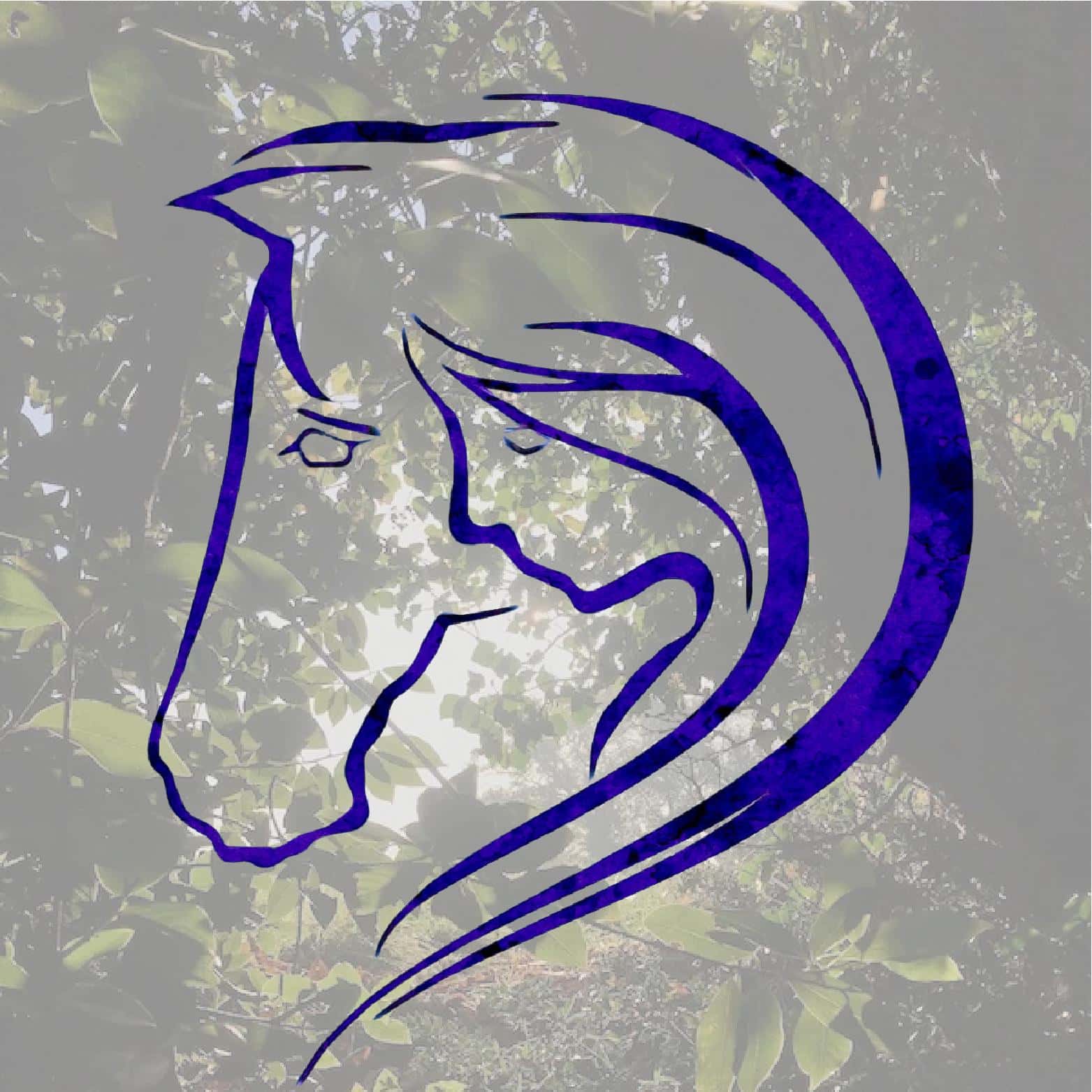Moving Forward From The Mouthpiece
Changing to bitless from riding with a bit asks for greater postural precision and greater patience! At first it feels clumsier and less sophisticated, especially with horses who can be resolute and strong willed in their physical expression. There may also be an element of fear, even if you might not want to admit it. With a bit a more powerful ‘hand-brake’ is always there. It might help to remind yourself that that hand-brake an instigator of most control issues rather than a preventative. Avoiding the negative push-pull cycle altogether is longer term solution.
Riding bitless is no different to going barefoot or rug-free. It does require some effort to learn a more effective way of connecting with the horse. You will stretch into a bigger and better place, and improve everything about your riding. I do not feel that my personal focus has changed, the key is still to straighten myself in order to straighten the horse. Straightness allows balance and balance allows control. The difference is that in riding bitless there is less possibility of taking a short-cut. Even an unintentional short-cut caused by anxiety in the horse’s mind.
The Wisdom Within
There are many considerations to become aware of and continue to improve in horsemanship. Discontinuing the use of a bit is not a short-cut to being a better rider, although it can reduce the degree of harm imposed on the horse. Although the equipment we choose does reflect our intent, it is not a measure of our personal sensitivity or our physical capacity. I believe that getting up on a horse’s back is a privilege. That working to improve personal balance, straightness and sensitivity is the deeper focus if we choose to ride.
The most important consideration, which will be aided by education and experienced, but comes before them, is your own inner guidance. Many of us are awakening to the joyful realisation that our inner wisdom both exists and is perfectly tailored to our own needs. Whenever you are changing your approach or your equipment pertaining to your horse, go within first and ask how it feels. Explore what comes up for you and allow it to be flexible. Invite your horse into this inner dialogue and the information can really start flowing! Not all horses choose bitless, and their choices can change every day.
My Bitless Gallery
Some photos of horses mostly early on in transitioning to bitless, demonstrating that engagement is not a function of the mouthpiece. This is most helpful in considering the use of the double bridle and the theories around using one.
